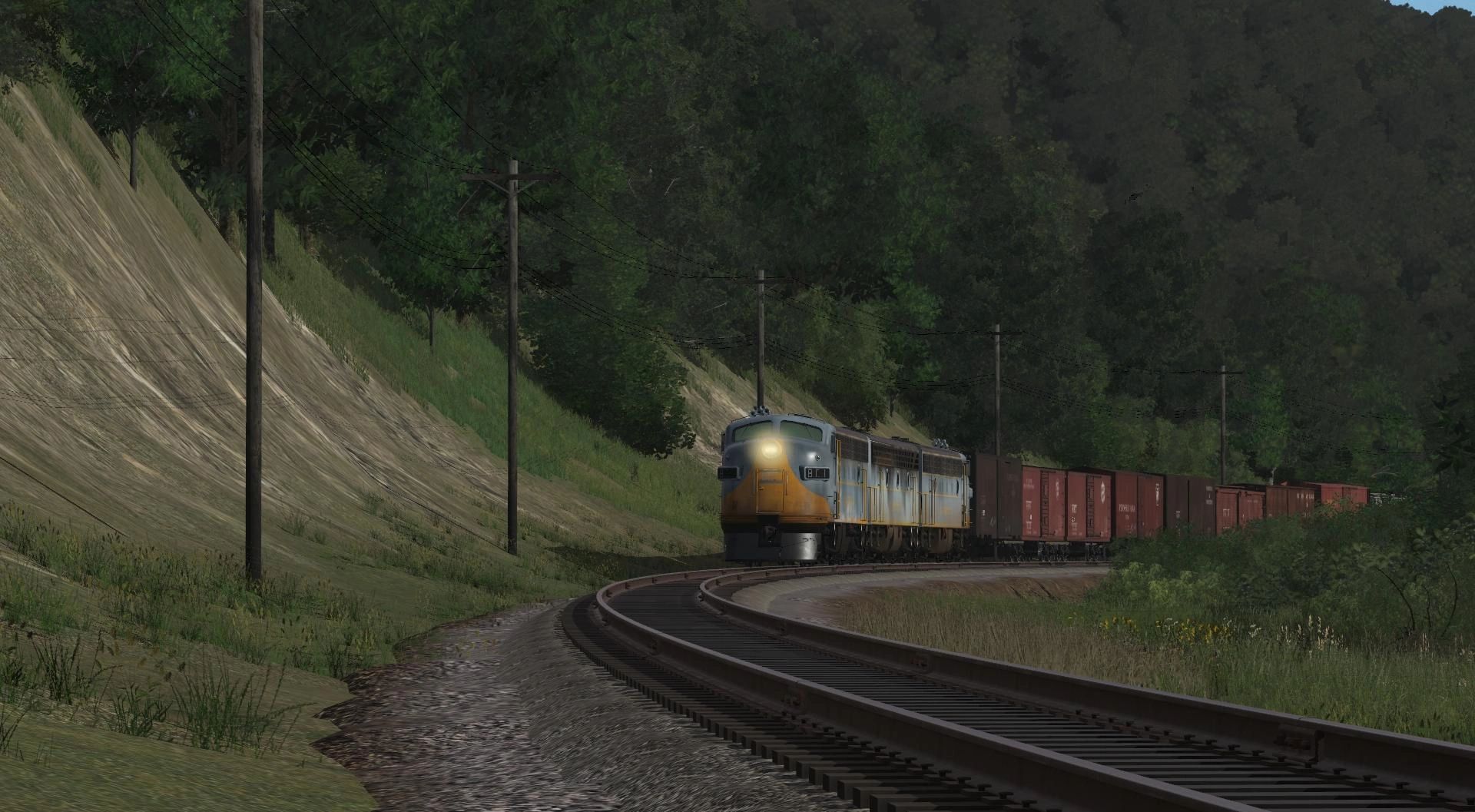The B&M and MEC used to team up and run trains in partnership with each other. They were friendly to each other and were nearly merged together on their own. From the late 1940s on, when both railroads dieselized, they even had the same paint-scheme. Like the Maine Central, the B&M and New Haven partnered with passenger trains. The two companies would run passenger trains from New London, Connecticut to Portland Maine. The New Haven ran trains from the ferry terminals in New London up to Worcester where the passengers switched to the Worcester Nashua, Rochester, and Portland, owned by the B&M, and rode up to Portland Maine where they would continue their trips up to Bar Harbor Maine after a journey to Bangor where they switched to the Bangor and Aroostook, or to other locations in the mountains on the many MEC branches. In Rochester, New Hampshire, these B&M/NH through trains would stop so that passengers could switch to the locals that ran to Lake Winnipesaukee, or take more longer-distance trains up to the White Mountains. All of this service died away in the Great Depression with the WNR&P going first in pieces in the 1920s when the B&M filed bankruptcy and had to liquidate lines in order to become profitable again.
There were a number of interurbans in New England with a number of them in Connecticut. Many of these were controlled by the New Haven including the Providence and Bristol, and others in central Connecticut. In Western Massachusetts in the Berkshire Mountains was the Berkshire Electric Street Railway. This company served the local towns in the Hoosac River valley and like many companies in the region, the Great Depression put them in the grave. It didn't help that the automobile and small trucks came along either and siphoned off passengers and any less than carload freight (LCL). There was similar service in Maine that ran to York and Portland such as the Portland and Saco, and in Massachusetts there were a number of electrics in Eastern Massachusetts, these were mostly commuter lines such as the
small narrow-gauge railroad, The Boston Revere Beach and Lynn that could be considered an interurban. This company initially ran parlor cars with velvet cushioned seats and large vestibules, pulled by small Mason-Bogey steam locomotives until about 1910 when they electrified. They took their parlor cars and turned them into electric cars using motors under the floor and an overhead trolley system. This company competed quite aggressively with the Boston and Maine, but they couldn't compete with the local transit companies and the automobiles that took their business away. They went out of business just before WWII started. Today, their ROW is the Blue Line in Boston from East Boston to Revere.
The other electric lines were mostly local, regional companies such as the Amesbury and Haverhill which also had branches to Salisbury and Newburyport where they brought passengers to the shore. In Amesbury proper, was the Amesbury Electric. This company was an interurban used to carry freight and passengers for the many mills that once populated the city.
As far as equipment, the railroads ran heavyweight passenger cars. Some of the named trains, such as the Congressional Limited between Boston and Washington, D.C., a partnership between the New Haven and Pennsylvania Railroad, that ran between Boston and D.C. would have observation cars and dining cars. This was probably the same with those trains heading up to Portland Maine as well as others that were meant for the wealthier folks heading to their summer homes in the mountains or on the lakes.
My late piano teacher used to take the train from Haverhill to Boston then Boston to North Adams, Massachusetts to visit her family out in that part of Western Massachusetts. She described in detail riding in the Boston and Maine wooden coaches with the windows open. Her mother would complain about the soot getting all over their clothes during the trip. She said that young boys probably 12 or 13 would board the train at various locations to sell box lunches and ice cream. When the train reached Hoosac Tunnel Station, they would wait and an electric locomotive would couple on to pull the train through to North Adams located on the other side of the Hoosac Mountain Range. In addition to visiting family in North Adams, she would also stay at her aunt's house located up the road from Hoosac Tunnel Station. The electric service on this line was terminated in 1946 when the B&M switched to diesel locomotives.
Freight was carried in all kinds of freight cars (wagons). They were definitely not high-cubes, double stacks, or 53-foot boxcars. In those days, they used 40-ft or smaller with reinforced wooden walls on the boxcars and some early steel boxcars.
For the rolling stock, I highly recommend you visit Trainzforge.
Creating quality games, by gamers, for gamers!

trainz-forge.com
Trainboi1 and others have created equipment that is suitable for the period you are modeling. Jackson Barno has created period-accurate freight wagons and other rolling stock that is perfect for the time period.



